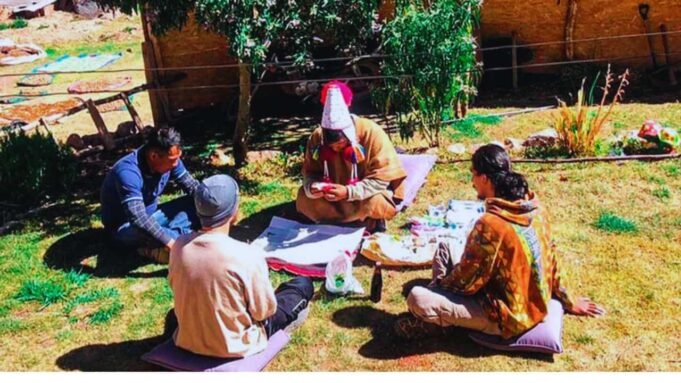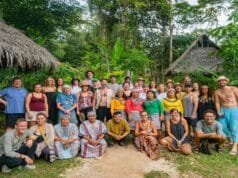Peru, the cradle of Ayahuasca, offers a spiritual and cultural experience unlike anywhere else in the world. More than just a retreat destination, it serves as a sacred space where ancient Amazonian traditions are preserved and shared with those seeking deep emotional, mental, and spiritual transformation.
For those who approach with intention, humility, and openness, Ayahuasca Retreat Peru can catalyze profound healing and life shifts. This guide explores what to expect, how to prepare, and how to choose the right retreat to ensure a respectful, safe, and enriching journey.
The Cultural and Spiritual Roots of Ayahuasca Retreat Peru
Ayahuasca has been used for centuries by indigenous communities in the Amazon Basin for healing, divination, and spiritual growth. In Peru, tribes like the Shipibo-Conibo, Asháninka, and Yawanawá have developed sophisticated traditions around this plant medicine. Central to the ceremony is the shaman or “curandero,” who leads participants through the experience with icaros—sacred healing songs that guide the energy and visions during the ceremony.
These rituals are deeply embedded in the worldview of these cultures, connecting participants to spirits, ancestors, and nature. Participating in a retreat in Peru offers a unique opportunity to engage with this wisdom at its source.
What to Expect on an Ayahuasca Retreat in Peru?
A typical Ayahuasca Retreat Peru lasts anywhere from 5 to 14 days, depending on the center and program. Many are located in the Amazon rainforest near Iquitos or in the Sacred Valley near Cusco. Daily routines include morning meditations, plant-based meals, group discussions, and nightly Ayahuasca ceremonies held in a ceremonial hut called a “maloca.”
Each ceremony is conducted in darkness, led by one or more shamans, and supported by facilitators. Participants drink the Ayahuasca brew and then experience several hours of visions, introspection, emotional purging, and healing. Ceremonies are often followed by integration sessions where participants share their experiences and receive support in processing their insights.
Preparing for Your Ayahuasca Experience
Proper preparation is critical for a safe and meaningful retreat. Physically, participants are usually asked to follow a “dieta” several weeks in advance. This includes eliminating alcohol, caffeine, processed foods, red meat, dairy, salt, and sugar. Many retreats also advise abstaining from sex, social media, and intense stimulation to enhance mental clarity.
Mentally and emotionally, participants should set intentions for what they wish to explore or heal. This doesn’t guarantee outcomes but helps anchor the experience. Medical screening is essential—those with heart conditions, psychiatric disorders, or who take medications like SSRIs must disclose this, as interactions with Ayahuasca can be dangerous or even fatal. Transparency and honesty during preparation are vital.
3-Day Ayahuasca Retreat in Peru: A Compact Journey of Transformation
A 3-day Ayahuasca retreat in Peru offers a powerful and condensed experience for those short on time but deeply committed to spiritual healing and self-exploration. While not as extensive as longer retreats, it still provides meaningful exposure to the sacred medicine and traditional Amazonian practices in a supportive environment.
Day 1: Arrival, Orientation & Preparation
- Arrival at Retreat Center: Participants are welcomed to a jungle or mountain lodge, often near Iquitos or the Sacred Valley.
- Health Check & Intake: A brief health assessment and medical screening ensure safety.
- Orientation Session: Retreat staff and shamans explain the structure, ceremony etiquette, and intention setting.
- Dietary & Spiritual Cleanse: Participants begin or continue a simplified diet, avoid stimulants, and engage in breathwork or meditation.
Day 2: First Ayahuasca Ceremony
- Morning Activities: Light yoga, journaling, or silent reflection to prepare mentally.
- Evening Ceremony: The shaman leads the group through the first Ayahuasca experience. The setting is quiet, sacred, and guided by icaros (healing songs).
- Post-Ceremony Integration: After the journey, participants rest or share their experiences in a quiet setting with optional facilitator support.
Day 3: Second Ceremony & Closing
- Early Morning Integration: Group sharing or private sessions to discuss the first ceremony and process insights.
- Evening Ceremony: A second Ayahuasca session often brings deeper visions or emotional release.
- Final Reflections & Departure: The retreat ends with a grounding session, offering guidance for integration and safe return home.
What’s Included in a 3-Day Retreat?
- Two guided Ayahuasca ceremonies.
- Medical and psychological screening.
- Accommodations and plant-based meals.
- Experienced shamans and bilingual facilitators.
- Basic integration support and transportation assistance (varies by center).
Is It Right for You?
A 3-day retreat is ideal for those with limited time, prior ceremony experience, or a strong support network at home for deeper integration. First-timers should ensure the retreat center offers robust screening, a small group setting, and clear preparation guidelines to maximize safety and benefit.
Ayahuasca Retreat Peru Cost
The cost of an Ayahuasca retreat Peru can vary widely depending on the location, duration, amenities, and the experience of the shamans and facilitators. On average, a 3-day retreat may cost between $300 to USD 800, while longer retreats (7–14 days) can range from $1,200 to over $3,500 USD.
Budget retreats typically include basic lodging, meals, and two ceremonies, while higher-end options may offer private accommodations, medical support, yoga, massage, and integration counseling. It’s essential to look beyond price alone and evaluate the retreat’s safety protocols, authenticity, and ethical practices when making your decision.
Benefits of Attending an Ayahuasca Retreat in Peru
Many who attend Ayahuasca retreats in Peru report significant and lasting benefits. These include:
- Emotional Healing: Participants often confront and release deep-seated traumas, grief, and limiting beliefs.
- Mental Clarity: Many experience breakthroughs in understanding their behaviors, relationships, and life patterns.
- Spiritual Insight: Some report visions of divine beings, ancestral guidance, or a sense of connection to all life.
- Behavioral Change: Following a retreat, individuals may develop healthier habits, improve relationships, or find new direction in life.
- Cultural Connection: Engaging with authentic indigenous traditions fosters respect for sacred medicine and global awareness.
While not every experience is blissful, the challenges encountered often lead to personal growth when integrated properly.
Risks and Safety Considerations
Despite its potential, Ayahuasca Retreat is not without risks. Physically, it induces nausea, vomiting (considered a form of energetic cleansing), diarrhea, and occasional dizziness or increased heart rate. Psychologically, it can bring up intense fear, sadness, or confusion, especially for individuals with a history of mental illness.
Medical complications can arise if participants are not properly screened or prepared. Combining Ayahuasca with certain medications—especially antidepressants, stimulants, or other psychoactive drugs—can lead to serious reactions. Some retreats include trained medical staff or nearby emergency resources, but not all do. It is essential to choose a retreat that prioritizes safety, proper screening, and emergency protocols.
Choosing the Right Ayahuasca Retreat in Peru
With the growing popularity of Ayahuasca tourism, it’s crucial to choose a retreat center that respects traditional practices and ensures participant well-being. Key factors to consider include:
- Experienced Shamans: The retreat should be led by traditionally trained shamans with a strong lineage.
- Qualified Support Staff: Look for facilitators with experience in trauma-informed care and emotional support.
- Health and Safety Protocols: Reputable retreats require medical screening and have emergency procedures in place.
- Integration Support: The center should offer post-ceremony integration through group sharing, one-on-one sessions, or follow-up support.
- Transparency and Ethics: Choose centers that compensate shamans fairly, give back to local communities, and avoid over-commercialization.
Avoid centers that promise guaranteed results, encourage large group sizes with minimal supervision, or lack transparency in their operations.
Legal Status and Responsible Tourism
In Peru, Ayahuasca is legal and protected under indigenous and cultural heritage laws. However, with legality comes responsibility. Ethical participation means respecting the sacred nature of the medicine, following retreat guidelines, and contributing positively to the local economy and culture.
Support retreat centers that employ indigenous staff, invest in the environment, and prioritize sustainability. Avoid treating Ayahuasca as a novelty or quick fix; instead, view it as a sacred tool that requires reverence and humility.
Post-Retreat Integration
The Ayahuasca experience continues long after the final ceremony. Integration—the process of applying insights into everyday life—is essential to making the experience meaningful. This might include journaling, therapy, mindfulness practices, or participating in support circles.
Many participants feel a strong urge to make lifestyle changes, deepen spiritual practices, or pursue new life goals. The key is to take small, grounded steps that reflect the wisdom gained during the retreat. Without integration, even powerful insights may fade or lead to confusion.
Conclusion
An Ayahuasca retreat in Peru is more than a journey into altered states—it’s a doorway into self-discovery, ancestral knowledge, and emotional healing. With proper preparation, respect for tradition, and thoughtful integration, it can be one of the most transformative experiences of a lifetime. However, it’s not a shortcut or a cure-all. Approach this sacred path with intention, humility, and care, and it may open your heart and mind in ways you never imagined.















